As I wrote last week, several key technologies have enabled our global workforce to maintain productivity while working remotely. From networking to collaboration tools to end-user devices, enterprises have rapidly invested to ensure the safe productivity of their employees. And while that outcome may be considered priceless for some, the supporting technology certainly does come at a price – and it’s a big one.
As a result, I wanted to offer some suggestions to help organizations create self-funding methodologies in support of the necessary investments recently made in network infrastructure and collaboration tools. Outlined below are just a few suggestions, but Strongbow will soon be hosting a webinar to explore these approaches in more depth. But for now, consider the following:
Usage-Based Cost Models
Do any of your Remote Access components have usage charges, measured either in minutes or megabytes, or other variable fees? If you are like many organizations today, usage patterns are trending up, and a review of your current supplier agreements is suggested to determine if that increased volume is being discounted appropriately. Perhaps you have existing volume-driven discounts, but it’s just as likely that marginal costs are not declining, although these certainly should be right now. As a result, it’s time to open the dialogue with your supplier to make sure your purchasing agreements fit the current times, which could not have been contemplated when these agreements were originally negotiated.
Under-Utilization
As much as some services are experiencing significant growth, others are very likely being under-utilized. For example, on-site Smart Hands and Video Conference room support volumes have likely fallen to new lows. If the same service provider also runs your Service Desk and Tech Bars, the ability to shift resources across different categories can be a quick win when it comes to reducing spend for third party services. Regardless, this is another discussion you should be having with your service supplier.
Networks are tunable as well. Although network access (i.e. the local loop) may be less flexible in many cases, MPLS Ports are most certainly configurable. While we are not recommending that you turn all pipes down 50% without some investigation, we strongly recommend you investigate some options. If Real Estate and HR are planning for 25% occupancy in the coming months and perhaps even years, there’s a real opportunity to dial down capacity at your main campus and branch locations.
End-User “Personas”
Personas are used to define business and technical requirements for different end-users. If a large subset of users are “road-warrior” salespeople, for example, they may require lighter computing devices to deliver presentations and join meetings in support of client engagements. A scientist, running complex chemistry models in a lab, however, may require a lightning-fast connection to a local storage array to minimize latency and maximize performance.
In light of COVID responses across all industries, business personas and end-user ‘use cases’ must be reviewed and updated to reflect the new normal. Perhaps your office-based knowledge worker now looks more like a road warrior salesperson. Updating your personas will ensure the right solution, with appropriate support services, for each particular end-user. If VPN software is now the best option for the average knowledge worker, not only must this be broadly provisioned for end-users, but so must the requisite operational tools for the Service Desk to assist clients remotely. By getting the right tools in the hands of each worker, not only is productivity maintained, but duplicate and un-necessary costs can be avoided by creating discrete user groups and/or segments to ensure all solutions are right-sized.
Supplier Opportunities
When was the last time your key contracts were reviewed and renegotiated? One of the biggest financial exposures stemming from COVID response are bubble-costs from under-utilized ‘legacy’ services and those new services that are now needed to support the newly distributed workforce. It will be important to review aggregate spend and spend trends prior to approaching suppliers to negotiate relief. In our view, there is no need to wait for a formal review or even worse, term expiration, to approach contract negotiations. In all likelihood, your organization is now spending more across various suppliers. It’s important to aggregate this spend and leverage wins and losses with suppliers to secure improved pricing within the term of your agreement.
It’s also wise to consider technology modernization as another tool to optimize costs. Do your providers have new solutions that are appropriate for the new world? This is a valuable question worth asking, as providers will be looking to satisfy these new requirements or risk losing customers. If large enterprises are buying MPLS and Internet from large providers, they most likely have a secure SD-WAN solution in their portfolio, which is a consideration that can be used to both negotiate short term savings and to effect longer term cost improvements as well.
Summary
Both internal IT teams and external service providers have achieved herculean results over the past 100 days, keeping employees productive and companies operational. Leadership teams have empowered infrastructure, procurement, and network teams to be successful with strategic purchases to enable the distributed workforce. As the dust settles, the need to reduce bubble costs and get budgets back on track will become of even greater importance. By using the above levers to steer service providers in the right direction, all organizations can identify and eliminate waste, unlocking value, and savings in 2020 and beyond.
